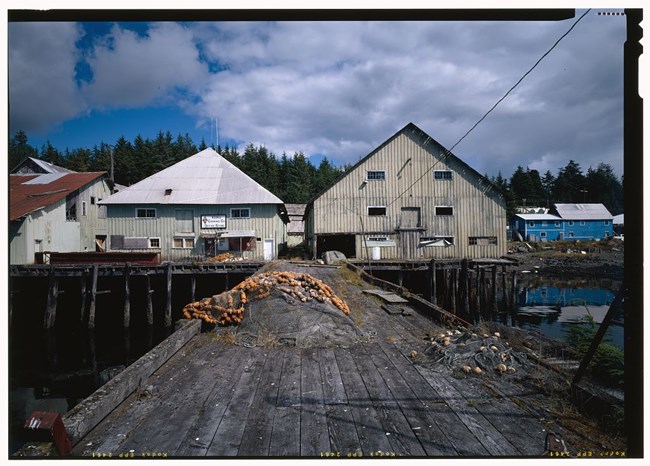Part of a series of articles titled Finding a Path Forward: Asian American Pacific Islander National Historic Landmarks Theme Study.
Article
Essay 5: Establishing Communities, 1848-1941

Photo by Jet Lowe for the Historic American Engineering Record (HAER AK,22-KAKE,2--38). From the collections of the Library of Congress (http://hdl.loc.gov/loc.pnp/hhh.ak0330/color.218112c)
The 19th and 20th century imperial wars, conquest, and the expansion of market capitalism in Asia displaced millions of people and created opportunities for large scale migration from China, Japan, India, Korea, and the Philippines. In the first half of the 19th century, a number of factors profoundly impacted the livelihood, land arrangements, trade, and everyday lives of inhabitants who survived a number of catastrophic events. These included the British conquest of India, the British Opium Wars and defeat of the Chinese empire, the implementation of port treaties and trade concessions, and the US forcible trade agreements with Japan. By the late 19th century, they also endured the Japanese empire's competition with Russia and China over the Korean peninsula and Manchuria and US assumption of control of the Philippines from Spain and bloody war of invasion and suppression of the Philippine independence movement. In addition, the demands of industrialization centered in Europe, the US and Japan intensified demands for large-scale resource extraction, plantation cultivation, infrastructure development, and the intense demand for large numbers of laborers.
Similar in size and scale to mid-19th to mid-20th century global migration streams from Europe, the Middle East, and Russia, historians have estimated that more than 52 million people from India, coastal China, and Northeastern Asia migrated across the globe. The development of steamship and railroad travel accelerated the pace and numbers of people migrating away from their birthplace. More than 90 percent of these migrants from China and South Asia migrated as laborers to British and French plantations in South and Southeast Asia, as well as... Read more >> (.pdf 3.1MB)
The views and conclusions contained in the essays are those of the authors and should not be interpreted as representing the opinions or policies of the U.S. Government. Mention of trade names or commercial products does not constitute their endorsement by the U.S. Government.
Last updated: April 9, 2019
